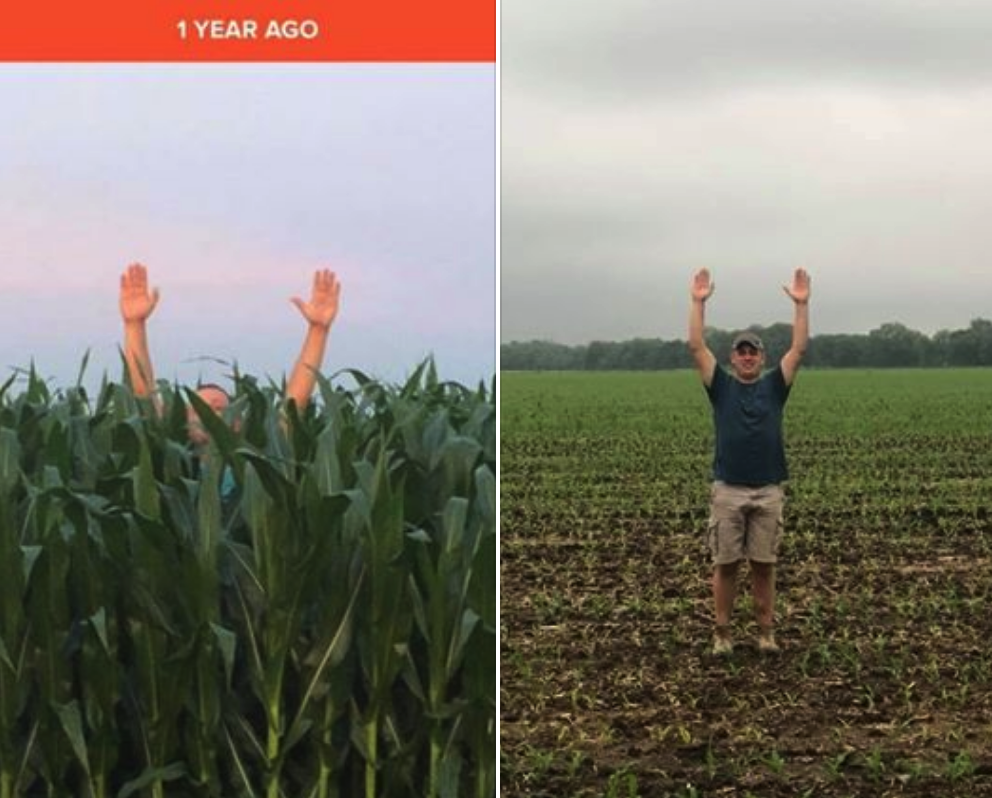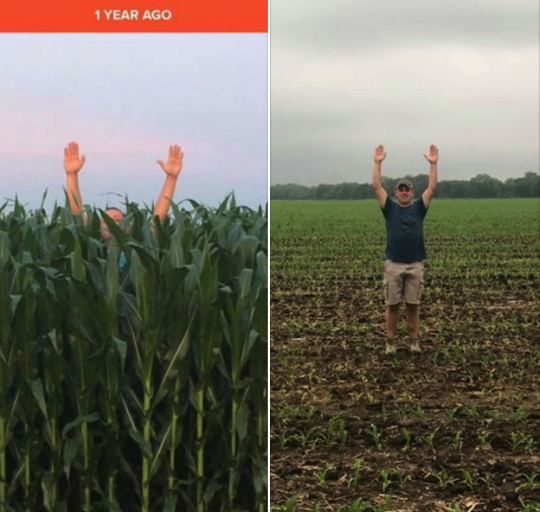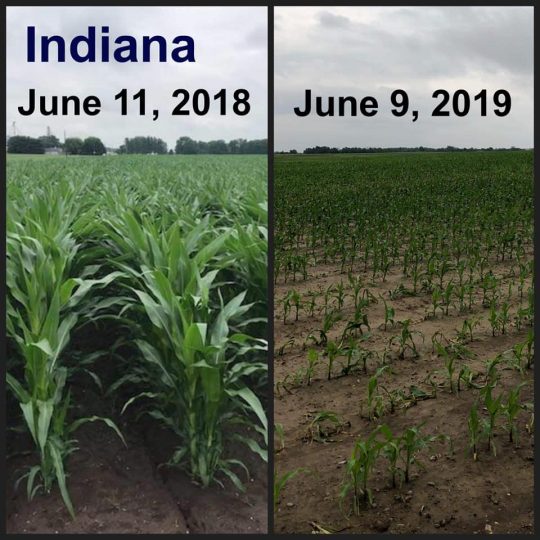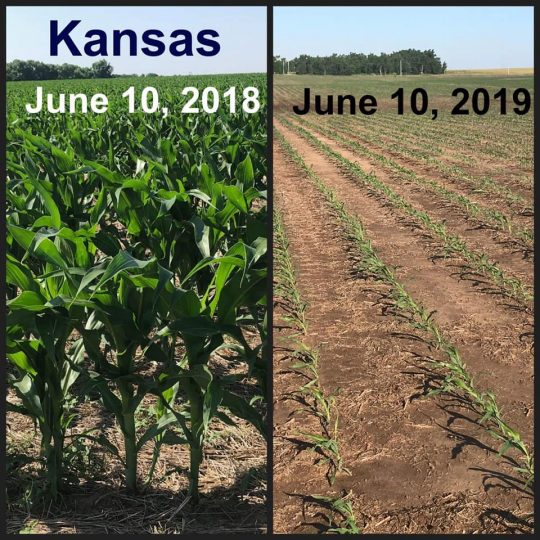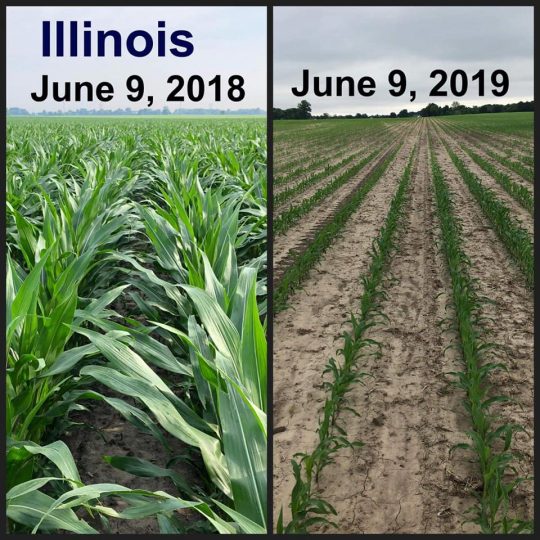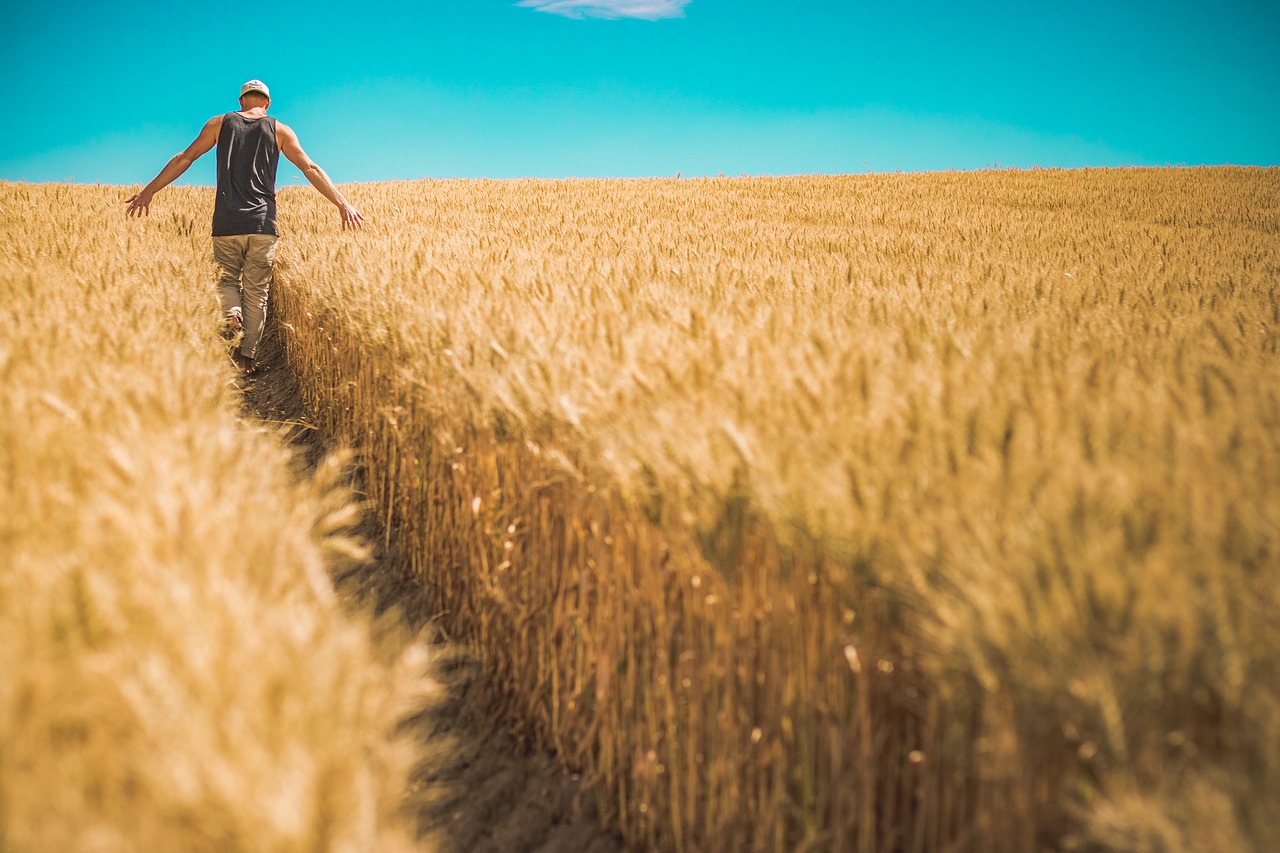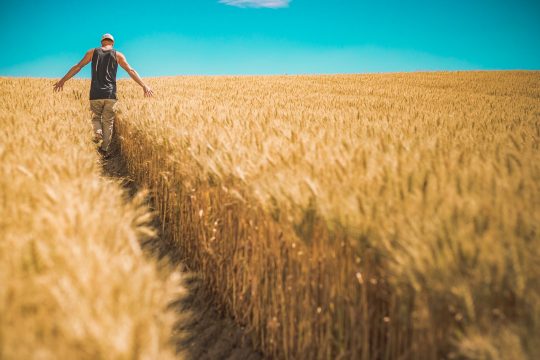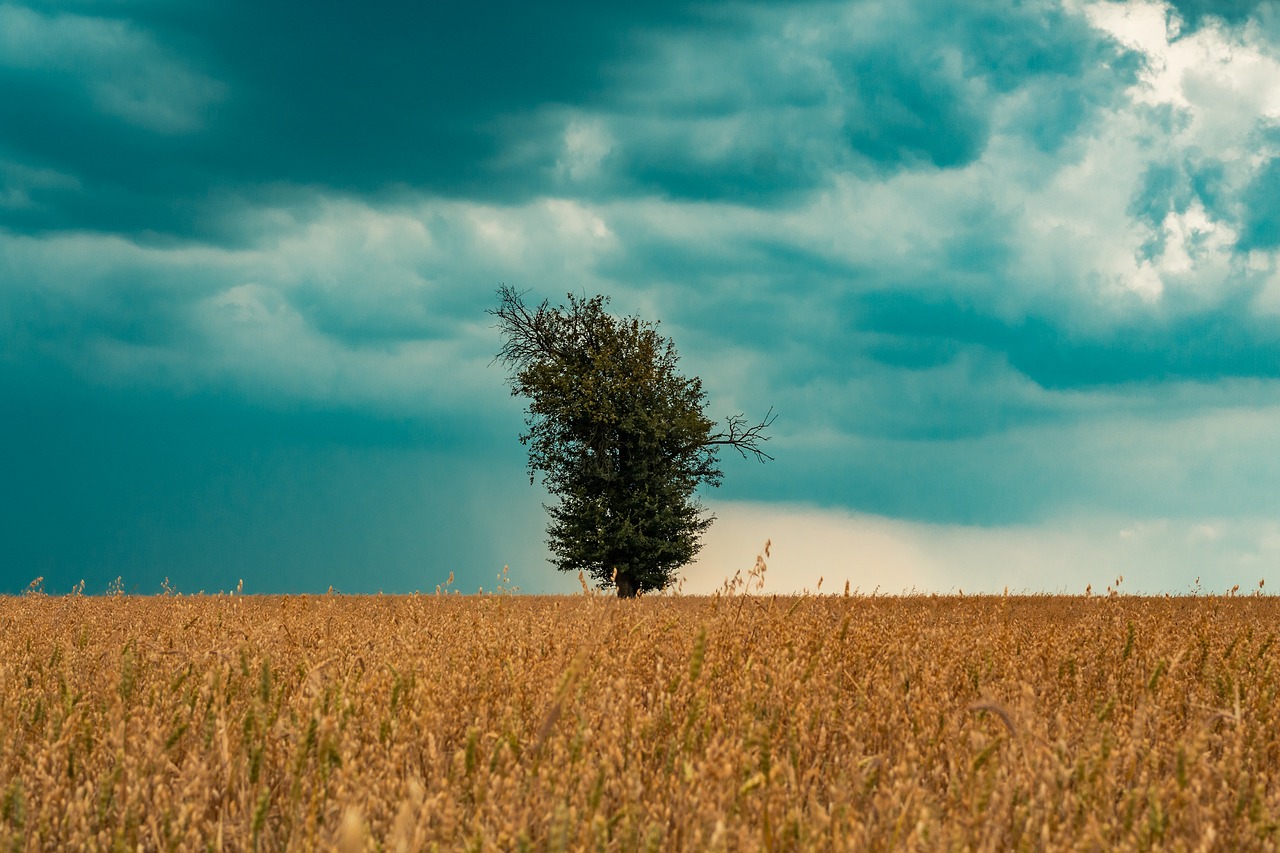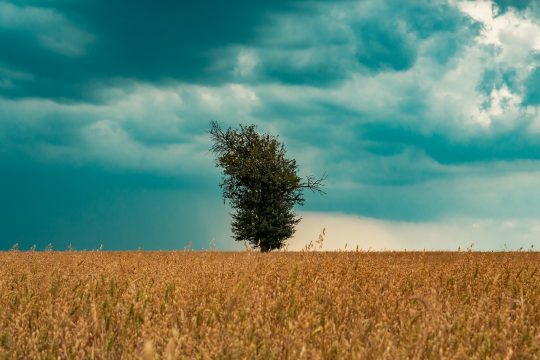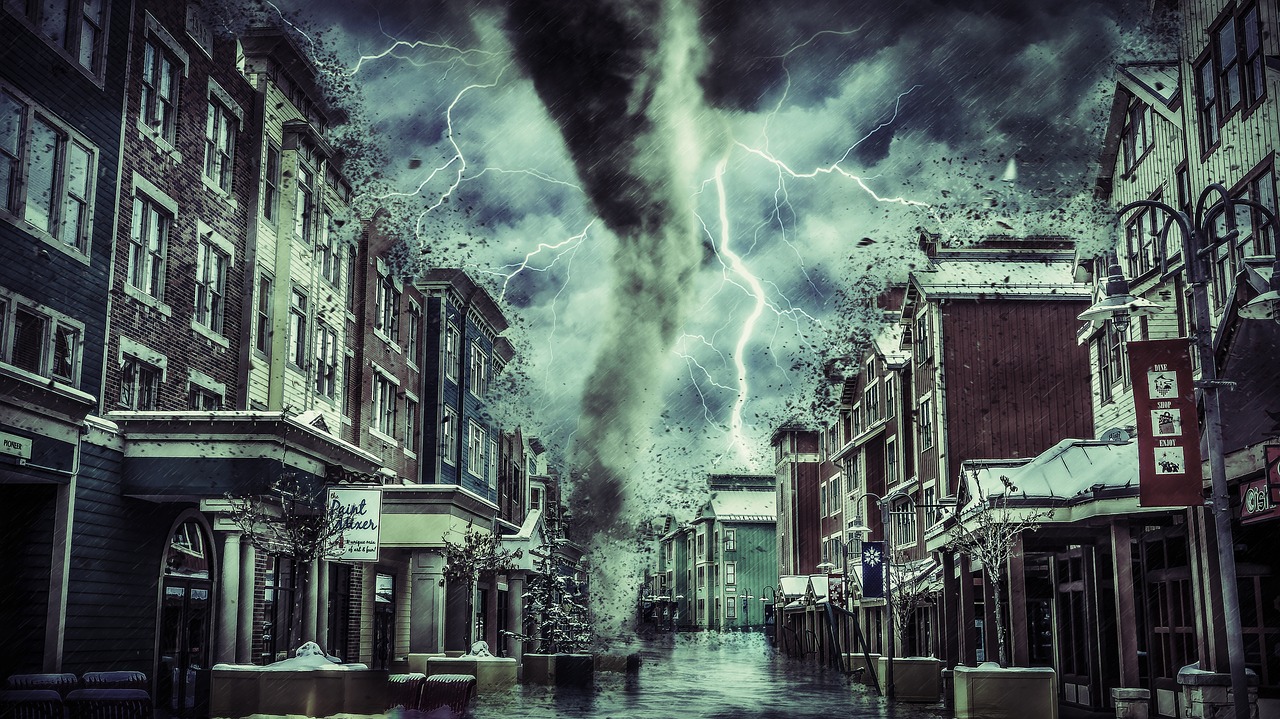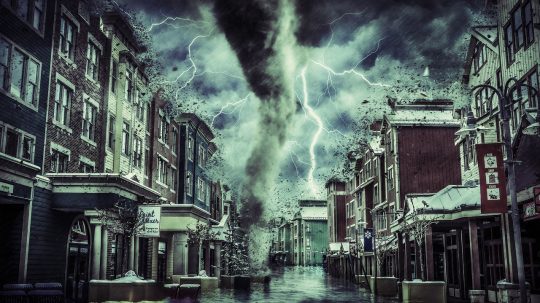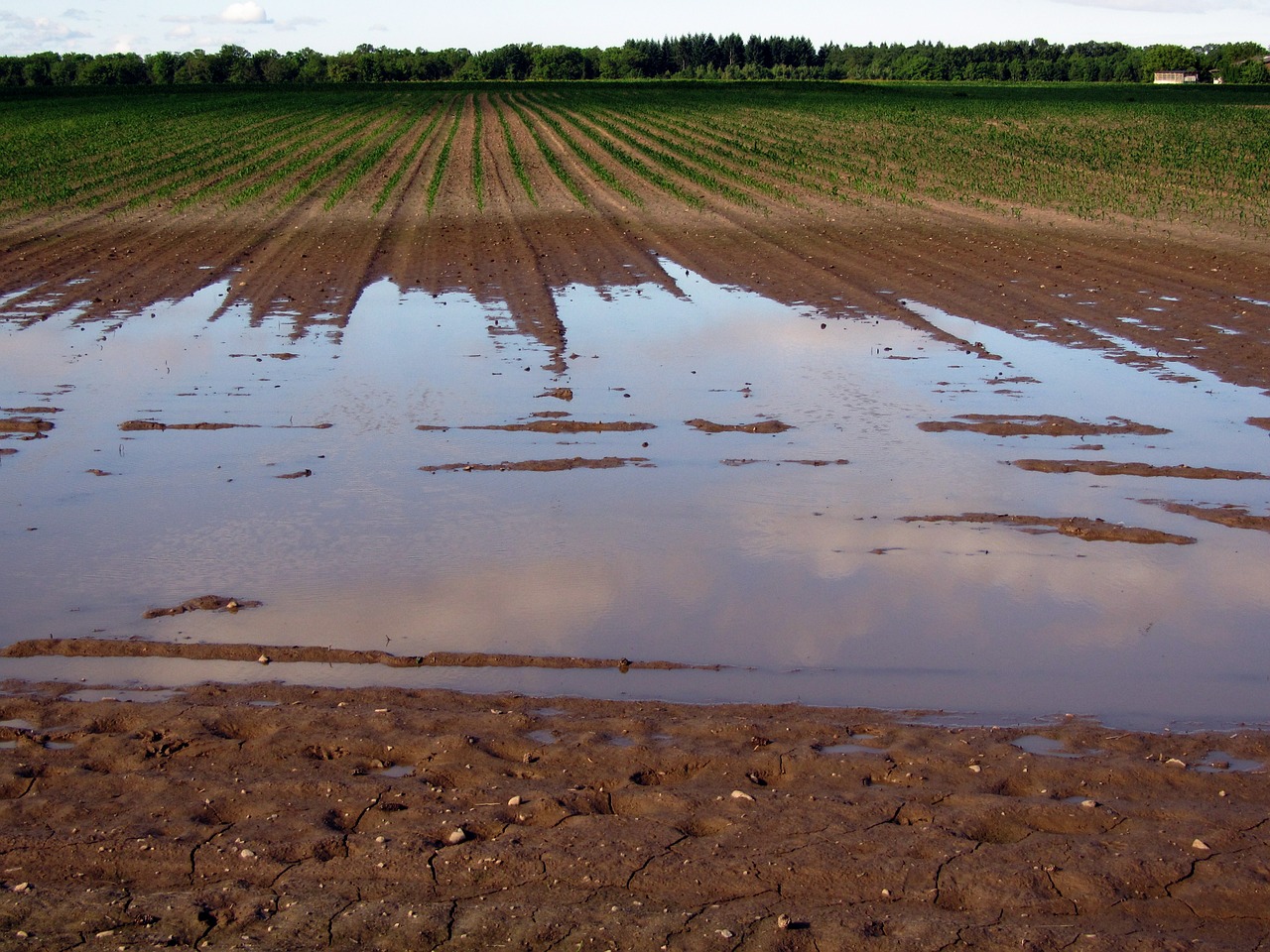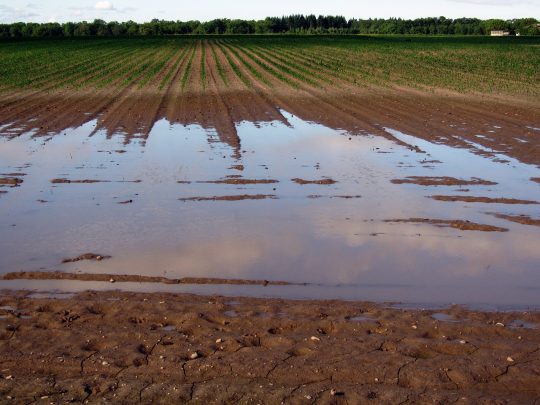 While the mainstream media focuses on the upcoming election, COVID-19 and the endless protests going on in our major cities, another great tragedy is unfolding all across the middle of the country. A nightmarish drought, horrific flooding along the Mississippi River and a giant “derecho” that just hit the farm belt have combined to make this one of the toughest years for farmers ever. And this comes at a particularly bad time, because the stress that the COVID-19 pandemic has put on food distribution systems has already created periodic shortages of certain items around the nation. We definitely could have used an uneventful growing season this year, and unfortunately we didn’t get it.
While the mainstream media focuses on the upcoming election, COVID-19 and the endless protests going on in our major cities, another great tragedy is unfolding all across the middle of the country. A nightmarish drought, horrific flooding along the Mississippi River and a giant “derecho” that just hit the farm belt have combined to make this one of the toughest years for farmers ever. And this comes at a particularly bad time, because the stress that the COVID-19 pandemic has put on food distribution systems has already created periodic shortages of certain items around the nation. We definitely could have used an uneventful growing season this year, and unfortunately we didn’t get it.
On Monday, an absolutely massive “derecho” roared through the Midwest. According to USA Today, the storm had winds of up to 112 miles per hour…
The storm had winds of up to 112 mph near Cedar Rapids, Iowa – as powerful as an inland hurricane – as it tore from eastern Nebraska across Iowa and parts of Wisconsin, Indiana and Illinois, including Chicago and its suburbs.
Most hurricanes don’t have winds that high once they finally reach shore, and I have personally never experienced wind speeds of such magnitude.
Needless to say, this very unusual storm caused immense devastation. According to Iowa Governor Kim Reynolds, approximately 10 million acres of crops were destroyed in Iowa alone…
Early estimates say the derecho flattened at least one-third of Iowa’s crops – about 10 million acres, according to Iowa Gov. Kim Reynolds. In addition, tens of millions of bushels of grain that were stored at co-ops and on farms were damaged or destroyed as bins blew away.
And it rocked Marshalltown, Iowa, where an EF-3 tornado destroyed the town’s business district just two years ago. With winds of 99 mph, Monday’s storm damaged some businesses that had recently recovered, even damaging the scaffolding being used to repair the historic courthouse dome.
I can’t remember a storm ever causing this much damage in the middle of the summer.
If about 10 million acres were flattened just in Iowa, how many more acres did this storm destroy in Nebraska, Wisconsin, Indiana and Illinois?
Sadly, this one storm is going to completely financially ruin some farmers. For example, Iowa farmer Tim Bardole is facing losses that could potentially exceed one million dollars…
Corn that used to stand upright on Bardole’s farm is now laying on its side. Some stalks snapped off, others ripped out of the ground at the roots.
Bardole estimated he’ll be out $200 an acre, which is $500,000 total.
Worst-case scenario, that could go up to $500 per acre. That would equate to $1.25 million.
How would you feel if you lost a million dollars because of one storm?
Further south, many farmers along the southern Mississippi Delta have already had their growing seasons wiped out by historic flooding for the second year in a row…
The southern Mississippi Delta is home to some of the most fertile farmland in the United States.
But not a single crop of soybeans, cotton, corn, or rice has been planted at many farms in the region — one of the poorest in the country.
This wasn’t supposed to happen.
The flooding of 2019 was a complete and utter nightmare, and this was the year when the recovery was supposed to begin. But instead, “hundreds of thousands of acres” are currently entirely buried by water…
For the second year in a row, widespread flooding has left hundreds of thousands of acres of farmland underwater, ruining entire harvests. And now, with their fields submerged, farmers are bracing for another year of no income.
Meanwhile, countless other farmers are having their growing seasons ruined by a crippling drought.
I know that many of you are reading this article and are thinking that what I am saying sounds contradictory.
After all, how can there be severe flooding and severe drought at the same time?
I know that this sounds very strange, but it is actually happening. We are witnessing severe flooding right along the Mississippi River, and at the same time historic drought conditions are creating massive problems across much of the western half of the nation.
In fact, we are being told that drought conditions in some areas have already become the worst “in almost a decade”…
Drought conditions throughout the country are reaching their worst levels in almost a decade.
This summer, drought has hit large portions of the United States, especially slamming key pasture and ranges for ranchers. But crops are also seeing downward trends in quality thanks to the hot, dry weather.
Things are particularly bad in the Southwest, and this is making life very difficult for many ranchers…
The worst-hit section of the country, with the highest levels of drought, are in cattle country: West Texas, New Mexico, Oklahoma, Colorado, and Kansas. That’s led to really damaged, dry topsoil and grazing land, which could force ranchers to invest in other feeding options for livestock. Only 36 percent of the country’s pasture and range land is rated good or excellent; 30 percent is rated poor or very poor, reports FarmFutures.
If you look at the latest U.S. Drought Monitor map, you will see that the drought is the worst in the areas where the original “Dust Bowl” developed back in the 1930s. Those that follow my work regularly know that I have been warning about a return of “the Dust Bowl” for many years, and now it is starting to happen.
2020 seems to be a year when the bad news never ends. First we were hit by the worst public health crisis in 100 years, then the U.S. economy collapsed, then massive riots erupted in our major cities, and now farms are being absolutely devastated all across the United States.
All throughout 2019 I warned that a “perfect storm” was coming, and what we have experienced so far is just the leading edge of that storm.
So I would encourage you to use the relative tranquility of the month of August to get prepared for what is ahead, because the month of September is almost here, and the presidential election is right around the corner.
***It is finally here! Michael’s new book entitled “Lost Prophecies Of The Future Of America” is now available in paperback and for the Kindle on Amazon.com.***
About the Author: My name is Michael Snyder and my brand new book entitled “Lost Prophecies Of The Future Of America” is now available on Amazon.com. By purchasing the book you help to support the work that my wife and I are doing, and by giving it to others you help to multiply the impact that we are having on people all over the globe. I have published thousands of articles on The Economic Collapse Blog, End Of The American Dream and The Most Important News, and the articles that I publish on those sites are republished on dozens of other prominent websites all over the globe. I always freely and happily allow others to republish my articles on their own websites, but I also ask that they include this “About the Author” section with each article. In addition to my new book, I have written four others that are available on Amazon.com including The Beginning Of The End, Get Prepared Now, and Living A Life That Really Matters. (#CommissionsEarned) The material contained in this article is for general information purposes only, and readers should consult licensed professionals before making any legal, business, financial or health decisions. I encourage you to follow me on social media on Facebook and Twitter, and any way that you can share these articles with others is a great help. During these very challenging times, people will need hope more than ever before, and it is our goal to share the gospel of Jesus Christ with as many people as we possibly can.




